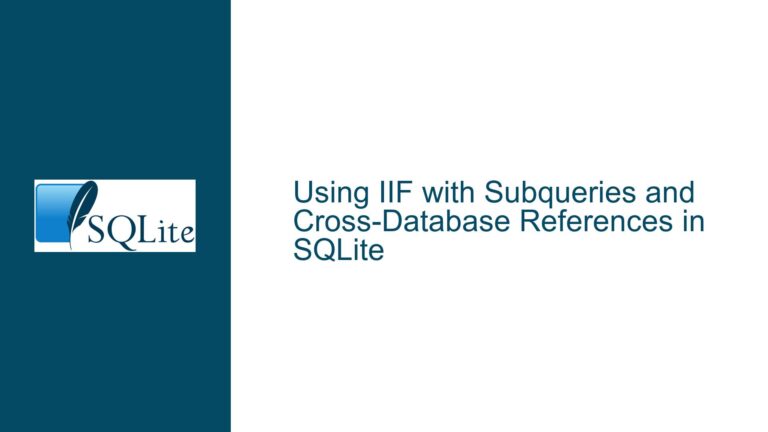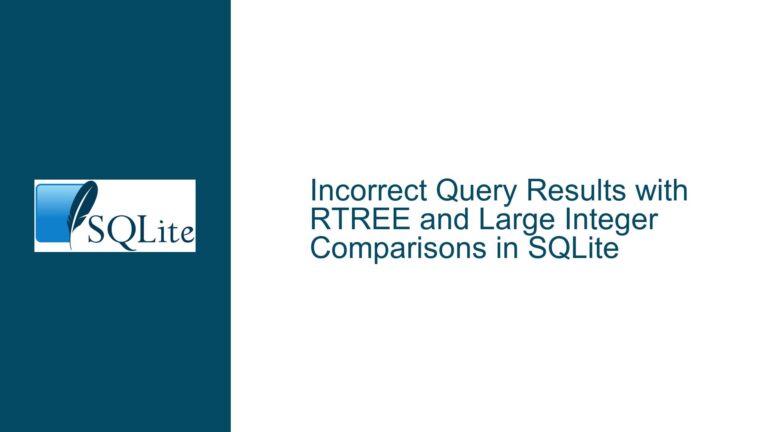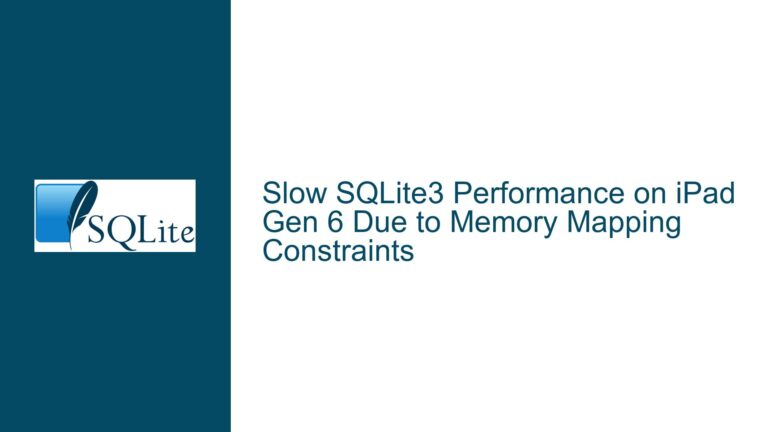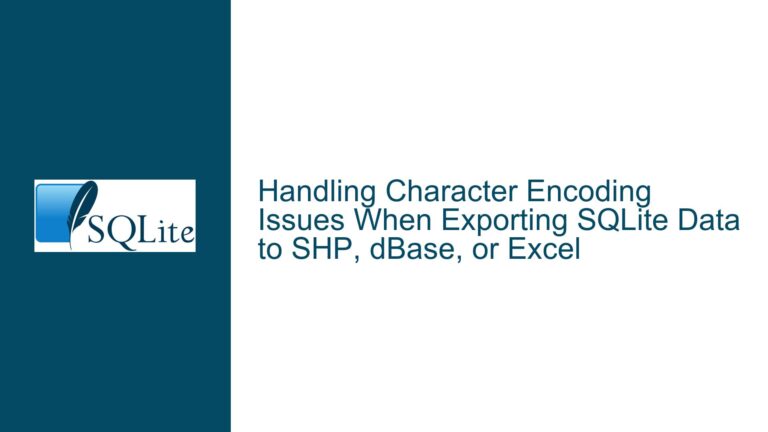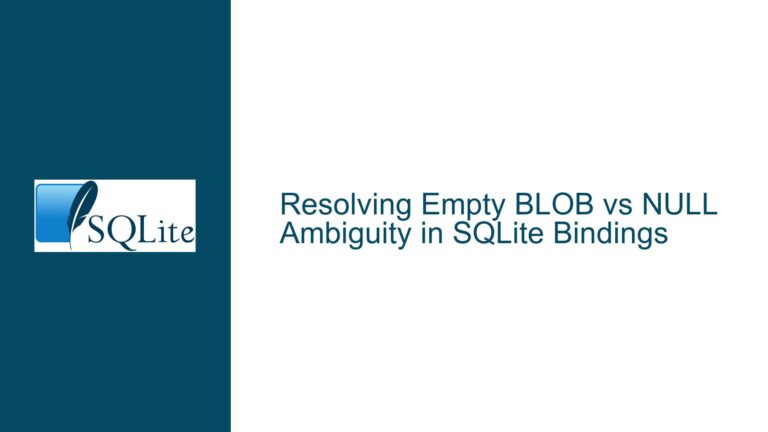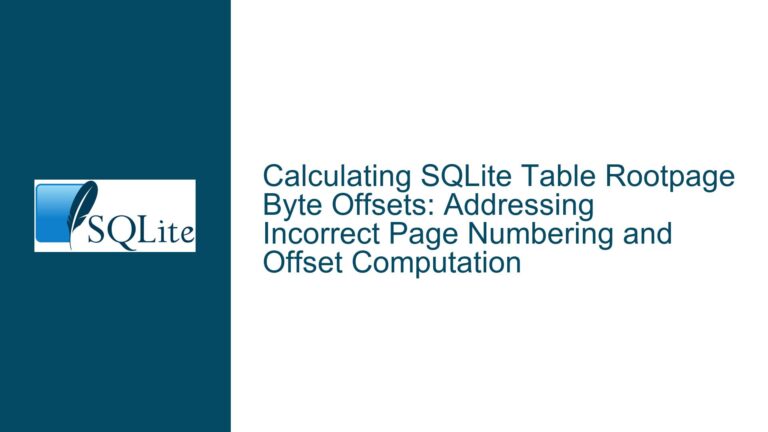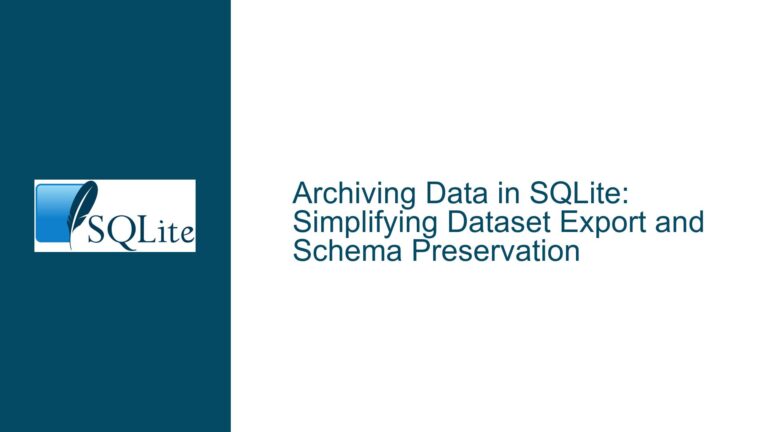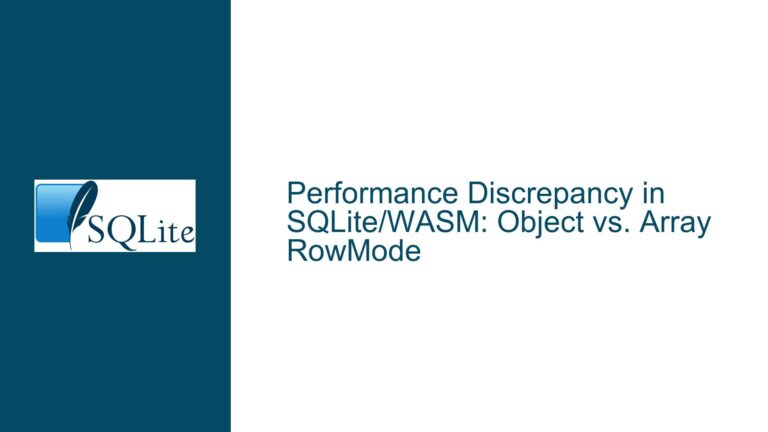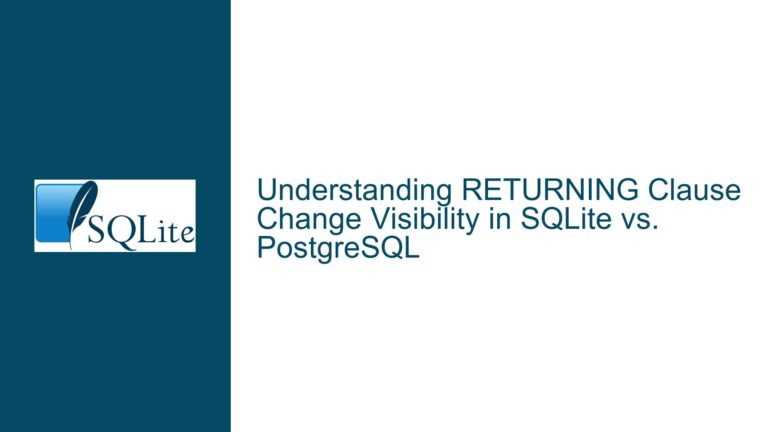Using IIF with Subqueries and Cross-Database References in SQLite
Issue Overview: Syntax Errors and Column Reference Problems in IIF with Subqueries The core issue revolves around the use of the IIF function in SQLite, specifically when attempting to incorporate a subquery within it. The user initially encountered a syntax error when trying to use a SELECT statement directly inside the IIF function. After resolving…
